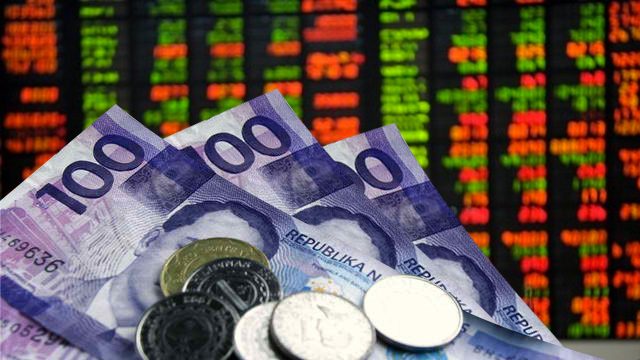SUMMARY
This is AI generated summarization, which may have errors. For context, always refer to the full article.

MANILA, Philippines – Philippine peso and stock prices both ended the week on a losing streak, with the local currency closing weaker at P50 to $1 due to uncertainties brought about by the normalization of interest rates in the US as well as strong demand from importers.
The local currency shed 3 centavos after opening stronger at P49.94 to $1 from Thursday’s 49.97 to $1. This was the weakest since the peso closed at P50.09 to $1 last Nov. 15, 2006.
Volume increased to $480 million from Thursday’s $376.5 million. (READ: PH starts off 2017 with hot money net inflows of $301M)
Aside from uncertainty of another rate increase by the US Federal Reserve next month, BSP officer-in-charge Diwa Guinigundo also cited the strong demand for US dollars from corporations.
“Still the same story of external market uncertainty. And despite market uncertainty about a March US fed interest rate hike, there was higher demand from corporates today. This drove the peso to touch P50 to a dollar level,” he said.
He pointed out the foreign exchange market is seen being dragged by negative sentiment.
The Philippine Stock Exchange index also dropped 0.53%, or 38.46 points, to close at 7,244.79, while the broader All Shares index slipped 0.31%, or 13.78 points, at 4,388.01.
Traders said investors continued to await more pronouncements from the US Federal Reserve after hinting 3 possible rate hikes this year after raising benchmark rates by 25 basis points last December.
Strong market fundamentals
“We continue to see negative market sentiment dominating the strong Philippine market fundamentals,” Guinigundo said.
“We should see market reacting to news that overseas Filipino remittances remain resilient and growth prospects remain very positive at the back of strong consumption, investment and public expenditures,” he added.
The Philippine peso shed 5.2%, making it the worst performing currency in Southeast Asia last year.
However, Guinigundo explained the local currency remains competitive in the region. (READ: Is your peso really just worth 67 centavos today?)
“In real terms, peso remains competitive and we continue to monitor pressure from weak exchange rate even as the exchange rate pass through to domestic inflation has gone down in recent years,” Guinigundo said.
“There is no substitute to constant monitoring and surveillance for any possible risks in the horizon,” he added.
Emilio Neri Jr., chief economist of the Bank of the Philippine Islands, said importers have had a more significant than usual demand while regular sellers were not as active during the trading session.
For his part, ING Bank chief economist Joey Cuyegkeng said this was the first time in a little more than 10 years the peso closed at P50 to $1 as demand for the greenback throughout the week pressured the local currency.
He added some degree of risk off sentiment among currencies in Southeast Asia could also have affected the peso,
“The peso could remain under pressure although seasonal inflows in March could provide some strength. Retaining the P50 resistance early next week would be important. A convincing break above this may push peso to the next target of P50.60,” he said.
He warned a faster pace of tightening by the US Fed and reflation policies of the new Trump administration, which is expected to be announced in next 10 days or so would likely affect forecasts.
ING sees a weaker peso of between P51.5 to P51.8 per $1 by the end of the year. – Rappler.com
Add a comment
How does this make you feel?
There are no comments yet. Add your comment to start the conversation.